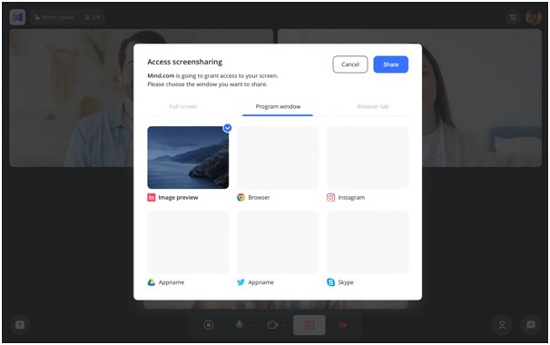In the current digital era, videoconferencing has emerged as a key educational tool, particularly in the context of e-learning. Videoconferencing allows educators to conduct classes, deliver lectures, and communicate with their students in real-time, irrespective of geographic boundaries. Education is now more open and flexible than ever before thanks to the revolutionary changes it has wrought in how students learn and communicate with their teachers. The advantages of videoconferencing for education will be covered in this article, along with a look at the iMind videoconferencing platform.
Benefits of Videoconferencing for E-Learning
There are numerous benefits of videoconferencing for e-learning. Some of the significant benefits include:
Enhanced Flexibility
Videoconferencing allows students to attend classes from anywhere, anytime, using a computer or a mobile device with an internet connection. Students find it less difficult to juggle their academic obligations with other responsibilities when they have this level of flexibility.
The increased flexibility offered by videoconferencing has been a game-changer for students, allowing them to attend classes from virtually anywhere in the world. This level of freedom has made it easier for students to balance their academic pursuits with other obligations such as work, family, and personal interests. With videoconferencing, students can take advantage of opportunities that would have been impossible just a few years ago because they aren’t concerned about scheduling conflicts or travel time.
Personalized Learning
The implementation of videoconferencing technology in education has revolutionized the approach to personalized learning. Instructors can now leverage the tools and functionalities of videoconferencing platforms to create a customized learning environment that caters to the unique learning styles, interests, and abilities of each student. By utilizing real-time collaboration, interactive feedback, and adaptive assessments, educators can facilitate a dynamic and engaging learning experience that promotes student agency and fosters intellectual curiosity. This results in enhanced learning outcomes and increased student satisfaction. With features such as screen sharing, virtual whiteboards, and breakout rooms, instructors can tailor their lessons to meet the individual needs and preferences of each student.
Improved Engagement
Videoconferencing enables real-time interactions between educators and students, leading to improved engagement and participation. With features such as chat and polls, instructors can encourage active participation from students and promote collaboration.
Cost-Effective
Videoconferencing eliminates the need for physical classrooms and travel, making it a cost-effective option for education.
Videoconferencing in education offers a way for seamless communication and collaboration between students and instructors regardless of geographical barriers in addition to its financial advantages. This fosters a diverse and inclusive learning environment that cultivates cross-cultural understanding and enhances critical thinking skills. Moreover, the flexibility of videoconferencing allows students to balance their academic pursuits with other obligations, making education more accessible and adaptable to individual needs.
iMind for Videoconferencing
One of the most popular videoconferencing platforms for education is iMind, a cloud-based platform that offers a range of features designed specifically for e-learning. Some of the features include:
Screen Sharing: With screen sharing feature, educators can share their screens with their students, making it easier to present content, show videos, and work collaboratively.
Breakout Rooms: Breakout rooms feature allows instructors to divide their classes into smaller groups for discussions, group work, and activities.
Recording: Platform allows instructors to record their classes, making it easier for students to review the content later and catch up on missed classes.
Chat and Polls: Chat and polls feature enables instructors to engage with their students in real-time and encourage participation.
Conclusion
Videoconferencing has become an essential tool for education in the digital age. It provides numerous benefits, including enhanced flexibility, personalized learning, improved engagement, and cost-effectiveness. Platforms like iMind have revolutionized the way educators deliver their classes and interact with their students, making e-learning more accessible and effective than ever before. With the continued growth of e-learning, videoconferencing will undoubtedly play a critical role in the future of education.




















